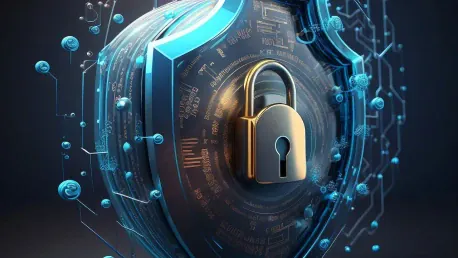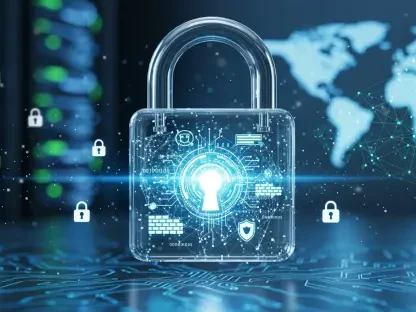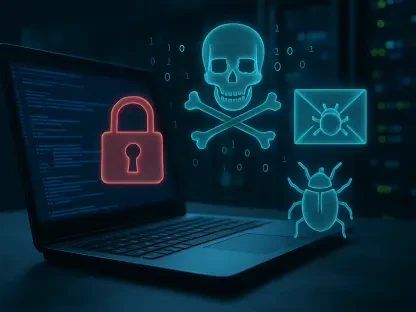Many organizations see cybersecurity as something separate from their internal operations. They know it’s valuable, but they often don’t include it in their primary strategy and daily activities. But, setting up information safety is like playing a team sport. Think of it like this: two teams create offense and defense strategies and stay flexible. Despite careful planning, things can go wrong, so working towards safety is an ongoing effort. So now the key question is: how can we learn from others’ successes and mistakes to strengthen our firewalls? This article discusses current trends in cybersecurity, the different threats companies face, and ways to strengthen insurance for all parties involved.
1. Increasing Sophistication of Cyberattacks
The dangers lurking in cyberspace have changed a lot these days. Hackers are getting much better at breaking into networks. Several things have caused such progress into the dark side of the Internet, including the emergence of powerful AI tools and the rise of cybercrime forums. Key players are black-hat groups that are, unfortunately, backed by governments with the goal of cyber warfare and spying for political reasons.
2. Diverse Attack Vectors
The dangers referenced above do not really relate only to viruses or malware that cause damage to computer systems. Offenders utilize a variety of methods, including:
Ransomware: Pitfalls usually start with phishing emails, which can encrypt someone’s data and then ask them to pay a fee to unlock it.
DDoS Attacks: These incursions flood the network with traffic, making the entity’s services unavailable.
Supply Chain Raids: Using third-party tools or services to infiltrate a target’s system or network is a new infiltration method specifically aimed at larger enterprises. Hackers attacked SolarWinds by adding harmful code to its Orion software.
3. Target Variety
More than just big companies, smaller businesses, healthcare facilities, and schools are now targets for cybercriminals. They look for any weakness in these organizations to steal valuable information.
4. Nation-State Actors
Countries are increasingly involved in cyber operations, which shows a new level of malicious coding. Governments around the world invest heavily in cyber tools for Internet hostilities. These operations often have serious consequences that blur the lines between unconventional clashes and cyber warfare.
5. IoT Vulnerabilities
Consequently, with the introduction of the numerous interconnected Internet of Things (IoT) devices come new threats. Some of these gadgets fail to have proper security measures in place. Hence, they can be easily exploited, which can, unfortunately, facilitate a large-scale breach.
6. AI and Machine Learning in Cyberattacks
Hackers are not, maybe not surprisingly, also expanding their use of artificial intelligence and machine learning in their operations. Their enhanced codes and algorithms improve phishing and automate complicated invasions, putting the responding groups to AI security solutions at the same level.
7. Regulatory and Compliance Challenges
Safety is a major barrier to regulation because compliance with regulatory requirements heightens security risks. This is especially true of cyber dangers, which are ever-evolving and impact regulations. Entities can be bound by laws such as GDPR and CCPA, which place severe monitoring requirements on organizations.
8. Global Collaboration
Internet threats are global in nature, meaning that cooperation between countries is a must. Today, governments, police, and IT security companies are jointly involved in collecting and distributing information about cyber criminals worldwide.
Key Trends for 2024 and Beyond
As we look forward, several trends are likely to shape the digital security landscape:
AI and ML:
AI and ML are advancing exponentially fast, and they are a liability for safety. Threats can be better detected through AI systems because they analyze issues from massive data sets in real time and are less likely to harbor an incursion.
Zero Trust Security Models:
Zero-trust architecture (ZTA) is becoming more common because traditional protective measures are losing effectiveness. The core idea of ZTA is “never trust; always verify.” This means every user and device must be authorized to access important information or networks. This approach includes checking users, frequent updates, and granting only the necessary admissions. These practices significantly reduce vulnerabilities to both internal and external dangers.
Quantum Computing Resistant Cryptography:
Quantum computing is gaining attention because it can be employed to attack old systems. Therefore, businesses must urgently switch to new risk management infrastructure, requiring research and practice in methods, policies, and techniques to keep data and communication safe.
Cloud Security Evolution:
As organizations shift their services to the cloud, these environments become highly valued targets. This means businesses must pay strict attention to rectifying misconfigurations, avoiding data leakage, and complying with different compliance standards. Relatively nascent technologies such as CASB and CSPM will transform how enterprises think and approach management and protection in the cloud.
5G Network Safety:
Deploying 5G networks will bring new challenges with faster file transfers and low latency. More and more gadgets are getting connected, especially in the Internet of Things. This increase in interlinked devices raises safety concerns. To address the risks associated with moving to 5G, we must pay close attention to confidentiality, as well as the overall infrastructure of smart grids and, beyond that, transportation systems that rely on IoT.
IoT Surveillance:
Moving forward, we should create new and stricter measures and policies to manage risks linked to IoT devices. Companies that use IoT will set up effective hardware management practices. This will include updating software, controlling access, and monitoring it in real-time to reduce risks from unsecured equipment.
Supply Chain Insurance (SCS):
Companies must pay attention to SCS to safeguard their software from vulnerabilities. They need to conduct procurement ethically and approach any risks originating from the third party. By utilizing this approach, they can control or avoid some of the perils associated with supply chain management and deal with issues in that market segment.
Biometric and Behavioral Authentication:
Usable security will stay popular by using new types of biometrics, like facial recognition and fingerprint scans. They will also include features like liveness control, which checks if the user is present during authentication, and behavioral control, which looks for signs of inauthentic behavior. Employing multiple biometric methods together will keep improving safety.
Privacy Regulations and Data Protection:
As consumers worry more about their data, privacy regulations are changing. Businesses must meet higher standards for file protection, obtain market research consent, and provide explicit permissions for information use. They should also focus on analytics and brand promotion methods that protect consumer records. This will help build trust and avoid penalties.
Workforce Development:
Vendors are helping pay for coaching programs and create partnerships between universities and businesses to address the ongoing shortage of experts. The focus is on developing programs that match current market needs and provide certifications to improve job prospects. Businesses are also promoting training and employment programs, especially internships and mentoring, to prepare the next generation of cybersecurity professionals.
Human-Centric Frameworks:
Admittedly, the consumer remains the weakest link in the protective infrastructure, which is why companies are running campaigns to educate users about preserving the environment. These initiatives should minimize the impact of social engineering attacks by implementing certification training among employees. The behavioral analytics tools will assist in detecting suspicious user activity and addressing and preventing probable insider incidents.
Automated Threat Hunting:
Firms that want to detect and eliminate risks consistently will increasingly need threat-hunting solutions. They can use platforms that integrate AI and ML to scan for signs of danger constantly, allowing staff to focus on critical issues and necessary actions during the detection process.
International Collaboration:
As internet risks transcend borders, collaboration among governments, international corporations, and experts on digital defense will intensify. Efforts will focus on sharing intelligence, coordinating responses to cyber incidents, and establishing standardized protocols for managing incursions at a global level.
Regulatory and Legal Challenges:
Cyber threats are crossing borders, so governments, international companies, and digital safety experts need to work together more. They will share vulnerability information, coordinate their response to incidents, and create guidelines for dealing with these situations globally.
Cyber Insurance:
Internet laws and regulations are evolving, and new rules are emerging to address issues in the digital realm. This creates legal liabilities and can harm an organization’s reputation. Managing such risks means they must focus more on compliance with regulations and on managing risks effectively.
AI-Driven Defense Testing:
AI-driven testing, along with vulnerability assessment and penetration trials, will improve to help firms more effectively in the near future. This proactive approach to security-proofing will enable corporations to avoid potential dangers in their systems.
Incident Response and Recovery Planning:
Organizations will focus on incident response and recovery plans and work to improve their policies and procedures for managing cybersecurity infiltrations. Being ready to prevent, recognize, and avoid these pitfalls will help reduce the risk of breaches and support business resilience.
Smart Cities and Critical Infrastructure:
Protecting connected systems is essential as cities adopt new initiatives and digitize vital infrastructure. We need robust protection for critical services like electricity, transportation, and public safety. This will help prevent disruptions and keep people safe.
AI-Powered Cybercriminals:
Cybercriminals have started using artificial intelligence (AI) and machine learning (ML) to make their attacks more complex and challenging to trace. As a result, companies will use new AI methods to counteract traditional defense mechanisms, leading to the creation and use of improved AI surveillance systems.
Ethical Hacking and Bug Bounty Programs:
Businesses are using ethical hacking and bug bounty programs to find weaknesses in their systems. Information security is moving to a less centralized approach, as crowdsourced testing helps organizations use ethical hackers’ skills to identify safeguarding flaws. This way, they can fix these issues before malicious hackers exploit them.
Conclusion
Addressing and preventing digital threats, which are constantly changing, has never been as important as now that we are approaching 2025. Institutions must be ready to tackle various dangers by adopting new trends and robust measures to preserve their files. This means ongoing learning, training employees, and using smart technologies are crucial in the fight against cybercrime, especially in a complex future.
While the workforce has valuable skills and experience in this fast-changing field, if you own a business, you should consider relying on programs like the Cybersecurity Expert Masters Program. Such courses can provide you with the tools and certifications you need to strengthen your protection protocols and build the future you want. Ongoing learning, skill development, and investment in new frameworks are vital to enhancing surveillance as technology advances.









